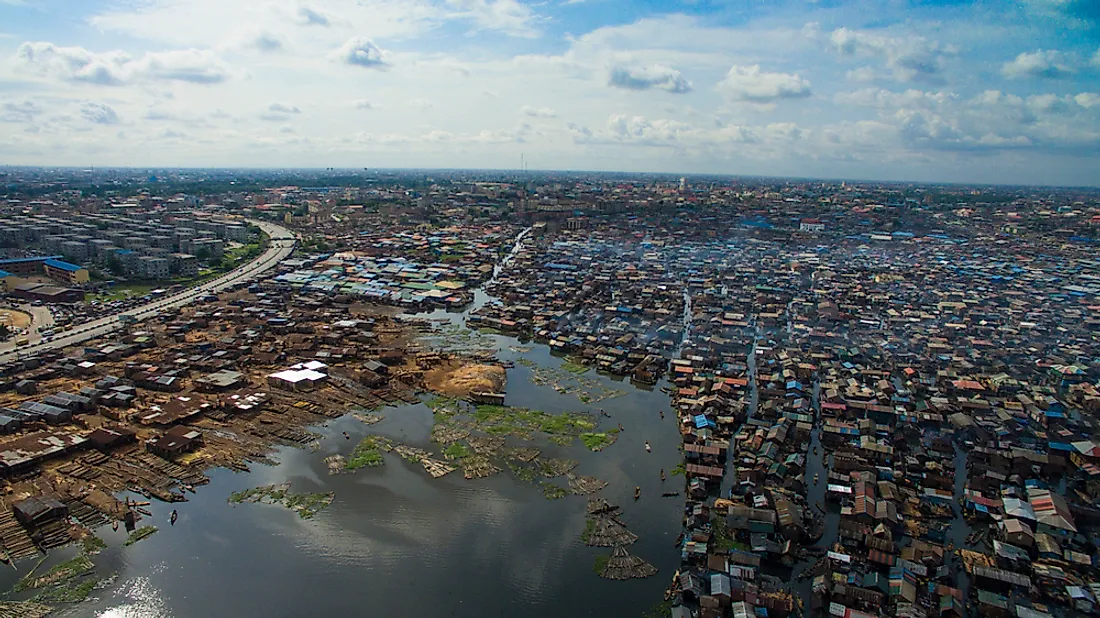What and Where is the Makoko Slum?

Makoko slum is located across the 3rd Mainland Bridge in the coastal mainland of Lagos. It comprises of six distinct villages namely, Oko Agbon, Adogbo, Migbewhe, Yanshiwhe, Sogunro and Apollo spread across land and water. It is the most fascinating slum lying on water with a beehive of activities throughout the year.
5. Description
The slum began as a fishing village over a hundred years ago when fishermen from Benin settled in the reclaimed lagoon from human debris at the edge of the Atlantic Ocean. Today, Makoko slum is home to more than 100,000 people, the majority of whom are migrant workers from Western Africa countries trying to make a living in Nigeria. Residents in Makoko depend mainly on fishing as the main economic activity.
4. Tourism
Slum tourism is a major activity in Makoko slum as tourists are fascinated by the nature of the floating slum. The most captivating attraction is the floating school which was designed by a team of architects who built it from plastic barrels that have space for classrooms as well as a playground. They hope the feature can be adopted in constructing shacks for safety purposes. Residents are not welcoming to visitors as they mainly perceive them to be government spies. They are also cynical about photography as they think their photos are sold for profit.
3. Habitat
The habitats of Makoko comprise of immigrants from Benin and Togo who settled in the reclaimed lagoon in the late 18th century. Makoko lagoon was the main supplier of tilapia fish in Lagos and neighboring countries. The lagoon is also surrounded by mangrove forests from which stilt architecture originated in the region. Albeit the increasing population, the residents have found ways through which they coexist with their natural habitat even when it poses environmental hazards to their existence.
2. Uniqueness
The fascinating thing about the Venice of Africa is the life on the water. All structures in Makoko rest on wooden stilts constructed from hardwood driven deep into the waterbed. Each household in Makoko owns a canoe which is used for transportation around the village. Children learn to paddle canoes as young as 5 years of age because it is one of the major skills required to survive in the slum. The waterways in Makoko are a beehive of activities as the residents move around conducting business activities in their canoes, making it the most dynamic slum in Africa.
1. Threats
Makoko slum is in itself a threat to human existence due to its dilapidated conditions. For decades, the inhabitants have had no access to infrastructure ranging from clean drinking water, electricity, and waste disposal, which has created severe environmental hazards to the residents and surrounding aquatic life. Communal latrines are shared amongst households and the wastewater flows straight into the water they live on. The oily black water resulting from increased waste disposal over the years no longer supports marine life. Efforts by the government to displace the people in the past years have been futile as it creates a bigger problem of relocating the homeless people. Residents believe that Makoko is their only culture and thus should be preserved by the government.











